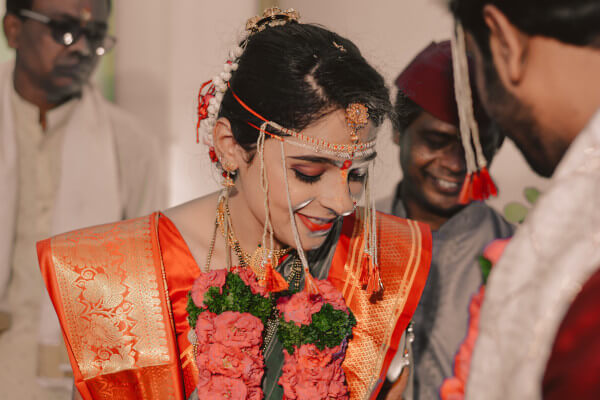Tuesday, July 21, 2009 | 6:14:00 AM
There are so many times of wedding rituals that are followed in India. Here we shall concentrate on various types of wedding and to begin with here is a detail on the way the Maharashtrian's conduct their weddings.
The rituals followed in the marriage are reflect the indigenous Maharashtrian vibrant and colorful culture. Usually, marriages among the Maharashtrians take place in the morning, because the auspicious time (muhurat) chosen for the wedding generally falls in the day time. The wedding ceremonies last for about three days (including the pre-wedding and post-wedding rituals). The rituals followed during the occasion are simple, yet very impressive, which makes the spectator say that Maharashtrian wedding is truly amazing!
Among the many regional communities living in India, Maharashtrians perhaps have the simplest and least opulent marriage ceremony. Though it differs substantially from the Brahmins along the graph to the tribals, certain elements remain constant and common.
Here are the ceremonies that take place. Click on each to find out more !
* Sakharpuda
* Kelvan
* Haldi
* Seemant Puja
* Gowrihar Pooja
* Mangalashtakas
* Kanyadan
* Saptapadi
* Lakshmi Poojan
* Griha Pravesh
Sakharpuda, the engagement ceremony, is held a few days before the wedding. For this ceremony, the groom's parents give the bride a saree as a token of her acceptance in their family.
A couple of days before the wedding, a feast called Kelvan is organized in both the bride's as well as the bridegroom's home. Each side hosts a meal for the entire family gathered in that home.
Haldi is yet another custom special to Maharashtrians. The bridegroom and the bride have their own celebrations in their respective homes. Women from each family get together to apply a mixture of turmeric, sandalwood and cream to the face and body of the bridegroom or the bride.
After the grooms' procession arrives at the bride's place, a seemaan pooja is conducted. This is when the bride's parents wash the feet of the groom, his parents and traditionally welcome the folks of his family.
The bride attired in a yellow sari given by her maternal uncle and mundavalya (decorative strings of pearls, beads, flowers) tied on the forehead apart from other jewellery and facial make-up is all ready to get married. She sits on a pat in her room and in front of her, a silver idol of Parvati is placed on a heap of rice on another pat.
The groom ties the mangalsutra around the neck of the bride. Mangal sutra is a necklace made up of golden pendant and black beads with alternative gold ones. This is believed to be a married woman's most precious possession. The groom then applies kumkum on the forehead of the bride and she in turn applies a tilak made of sandalwood paste on the forehead of her husband. The grooms mother gifts the bride a silk sari, along with toe rings etc.
Bride's father gives the bride away to the groom. The priest asks the groom to join both the palms and receive in it stream of holy water poured by bride's mother while bride's father says that he is giving away in marriage his daughter to this gentleman so that both of them can start together a life of Dharma, Artha and Kama. The groom accepts it saying that this is giving away love for love. The one who gives love is also one who receives love.
This is the ritual where the two walk together the seven steps. The groom takes the left hand of the bride in his right hand and they take seven steps together in the southeast direction. A heap of rice is kept at every step and the couple step on this heap at every step. The ritual is symbolic of their married life and is an exchange of vows between them. At the end of the ritual the groom chants mantras to forgive him for any flaws in the conduct of the homa.
One of the most significant events after the marriage is Laxmi Narayan Puja. The bride and the bridegroom are considered to be Goddess Laxmi and Lord Narayan respectively and worshipped. After this ceremony the bride is properly handed over by her parents to the bridegroom in a ceremony called kanyadaan.
The groom's mother welcomes the couple. She washes the couple's feet with milk and then water. After the aarti is performed, the bride enters the house by kicking a glass of rice. The couple enters the house putting their right foot forward. The family sits and talks for sometime after which the couple is shown their room.
Posted By


